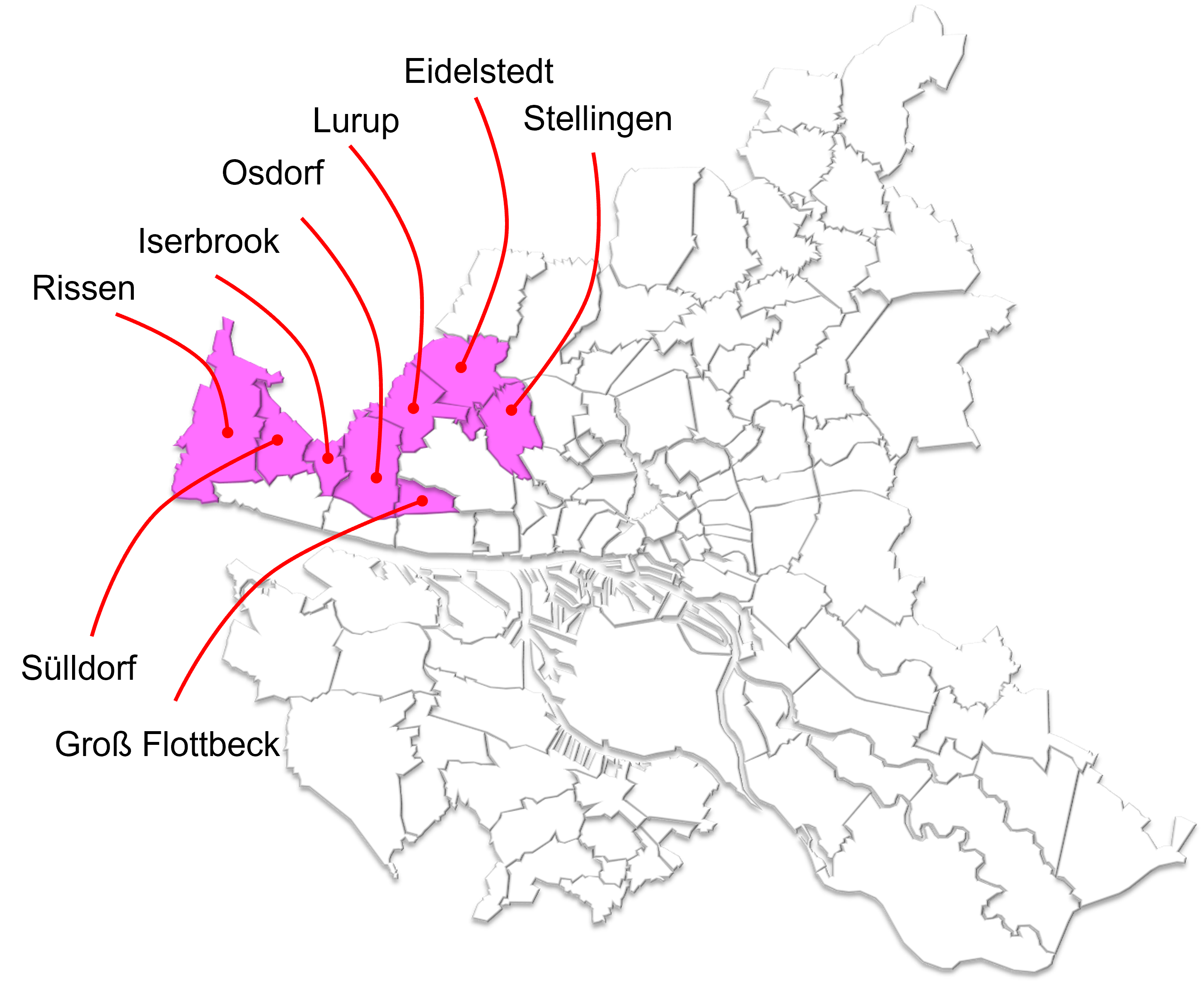
Groß Flottbek is a relatively small suburb and, regarding its atmosphere, very much like its neighbors' Othmarschen and Nienstedten, the very exclusive Elbe suburbs. It kept its village character and is a little more quiet then the Elbe suburbs. A couple of ancient reed covered farm houses in the neighborhood of the Groß Flottbeker church remind of the farming heritage. The salesman Caspar Voght (1752-1832) bought a couple of farmhouses and land in 1785 and developed it to an "ornamented farm" and a park in English style. His villa can still be admired at Baron-Voght-Straße. The remaining bits of this park are today's Jenisch Park in Othmarschen.



Get an impression of available apartments in this district
The link refers to the biggest real estate webportal and what you see is representative. The search is limited to unfurnished apartments with a built-in kitchen. Any furniture you see will go out before you move in.
Get an idea of rental price development in this district
The link refers to statistics of the biggest real estate webportal and shows the m² prices as so requested by the landlords. They can be considered being the reality since there is no room for negotiation in this market.
The area became more urban only with the construction of the train line in 1882. The "newer" station built in 1897 is still in use. It was built to improve the connection of Othmarschen to Hamburg and the residents of Groß Flottbek requested that if they should allow the construction, an entrance should be built on their side of the station, too. With the enhanced connection richer town people chose Groß Flottbek as their living area and magnificent townhouses were the outcome. Many of these mansions were built in the 1920ies and 30ies and are constructed with the famous dark red brick. Huge private gardens and big trees spread an all-nice-feeling. At the Rosenhagenstraße and the Adickestraße very beautiful houses can be admired, designed by Peter Behrens for the German Yard (Deutsche Werft). They were meant for the top management of the yard, whilst the workers were living in Finkenwerder, near the yard itself.
There are only a very limited number of two-storey apartment blocks which are inhabited by students. Around one third of them come from foreign countries, and all of them influence the average age of the district significantly, making it livelier. Groß Flottbek shares its shopping center with Othmarschen. The Waitzstraße, called "die Waitze", offers everything for the daily demands plus a couple of smaller boutiques. The district neither offers a great nightlife and residents would go to the center of the close Bahrenfeld to go out. The Johannes Brahms conservatorium is located in Groß Flottbek and continues to educate musicians since a move in the 80ies of the last century from Blankenese.












Photos f.l.t.r.: Streetview of the Waitzstrasse in Grossflottbek (c) GeorgHH (public domain), remaining: Luong
